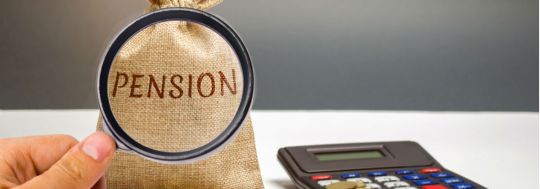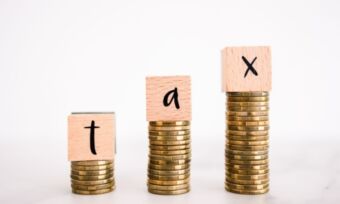If your super has dived can you get a higher age pension payment?

Retirees whose super balances have taken a hit may find they are entitled to a higher age pension payment as a result. We take a closer look.
The coronavirus pandemic has hit our hip pockets in more ways than one and the effect on super balances is one that most Aussies are feeling. According to estimates from SuperRatings, the median balanced option fell by 10.0% over the March quarter. The median growth option dropped by 14.1% over the quarter while the median capital stable option dropped by just 3.8% over the same period.
Super funds in pension phase have seen similar results. SuperRatings estimates that the median balanced pension option fell by 10.2% over the March quarter, while the median growth option fell 14.4% and the median capital stable option was down 3.8%.
While younger people will more than likely see their balances rebound by the time they retire, those already retired and relying on their super for income don’t have the same amount of time on their side.
Am I entitled to a higher age pension payment because my super balance has dropped?
If you’re a retiree whose super balance has fallen you may find that you are now entitled to a higher age pension payment or you may even be eligible for the pension for the first time. Whether or not this is the case for you largely comes down to your assets and your income.
“We use a person’s income and assets to work out if they’re eligible for age pension, and how much they will get,” explained Services Australia General Manager Hank Jongen.
“When you reach age pension age, we count your superannuation in both the assets test by using the balance on your latest statement, and in the income test by applying the deeming rules.”
Asset test limits
There are limits to how much your assets can be worth before it affects your pension amount. The table below shows the assets limits based on whether you are single or part of a couple and whether you own your own home or not.
Age pension asset test limits
← Mobile/tablet users, scroll sideways to view full table →
| Status | Full pension asset limit | Part pension asset limit |
|---|---|---|
| Single homeowner | $263,250 | $578,250 |
| Single non-homeowner | $473,750 | $788,750 |
| Couple homeowner (combined) | $394,500 | $869,500 |
| Couple non-homeowner (combined) | $605,000 | $1,080,000 |
Source: Services Australia. Limits for non-homeowners may be higher if they get rent assistance with their pension. For homeowners the family home is not included as part of the assessed assets.
So based on the above if you’re a couple who own their own home to get the full age pension your assets need to be valued less than $394,500. If your assets are valued more than that you may still be entitled to a part pension but if they exceed $869,500 you aren’t entitled to anything. So simplistically speaking if your super is your only asset other than your home and the value dropped from $420,000 to $380,000 you may now be entitled to the full age pension amount.
Income test
Services Australia also assesses your income from all sources including superannuation.
If you’re single you can earn up to $174 per fortnight and still receive the full pension. Your pension payment will be reduced by 50 cents for each dollar over $174 you make. For couples the amount where the pension payment starts to be reduced is $308 a fortnight.
Deeming
Then there is deeming. The Services Australia website describes deeming as a set of rules used to work out the income created from your financial assets. It assumes these assets earn a set rate of income, no matter what they really earn – even if your investment return is higher.
There are two deeming tiers based on the value of your assets. The amounts also vary depending on whether you’re single or a couple (see table).
Deeming rates for singles
← Mobile/tablet users, scroll sideways to view full table →
| Investment value | Current deeming rate | Deeming rate from 1 May |
|---|---|---|
| First $51,800 | 1% | 0.25% |
| Anything over $51,800 | 3% | 2.25% |
Deeming rates for couples (where at least one person gets a pension)
← Mobile/tablet users, scroll sideways to view full table →
| Investment value | Current deeming rate | Deeming rate from 1 May |
|---|---|---|
| First $86,200 | 1% | 0.25% |
| Anything over $86,200 | 3% | 2.25% |
Deeming rates for couples (where neither of you gets a pension)
← Mobile/tablet users, scroll sideways to view full table →
| Investment value | Current deeming rate | Deeming rate from 1 May |
|---|---|---|
| First $43,100 | 1% | 0.25% |
| Anything over $43,100 | 3% | 2.25% |
Source: Services Australia

How much more might I get?
The amount you may get will depend on your individual circumstances including whether you own your own home or rent, your super balance, any other assets you own and any income you receive.
Canstar asked Industry Super Australia to crunch the numbers on a hypothetical scenario and the results may surprise you. A single person who saw their super balance drop from $300,000 to $270,000 could now be entitled to an additional $61.40 per fortnight. From 1 May, when deeming rates drop again this may increase by a further $29 a fortnight bringing the total additional amount to $90 a fortnight (see table).
A couple whose super balance fell by 10% from $450,000 to $405,000 could potentially have seen their age pension increase by $135 per fortnight.
Hypothetical example: How much your fortnightly age pension may increase if your super drops by 10%
← Mobile/tablet users, scroll sideways to view full table →
| Single person | Couple (combined) | ||||||
|---|---|---|---|---|---|---|---|
| Scenario | Super | Age Pension* | Change | Super | Age Pension* | Change | |
| Base case | $300,000 | $834.05 | $450,000 | $1,257.10 | |||
| From 1 May, 2020 when deeming rates drop | $270,000 | $924.05 | $90 | $405,000 | $1,392.10 | $135 | |
Source: Industry Super Australia. *Per fortnight. Assumes they are homeowners and have no assets other than super.
What should I do if I think I may be eligible?
“We’re continuing to monitor market conditions so that customers are not unfairly disadvantaged by the economic downturn,” Mr Jongen told Canstar.
Generally though Services Australia reviews and updates most account-based and market-linked income streams to ensure people are receiving the correct payment rate or concession card in February and August each year. “We generally receive this information directly from income stream providers,” Mr Jongen explained.
If the value of your super has fallen substantially since February though you can update the details yourself online using myGov and selecting Centrelink. There are detailed instructions about the process on Services Australia’s website.
In some cases you may be asked to provide further documentation but if not then your age pension payment will automatically be updated to reflect the new information you provided. It can be as simple as that. And if your situation changes again you can update your details online.
Cover image source: Andrii Yalanskyi/Shutterstock.com
This article was reviewed by our Editorial Campaigns Manager Maria Bekiaris before it was updated, as part of our fact-checking process.
Try our Superannuation comparison tool to instantly compare Canstar expert rated options.






